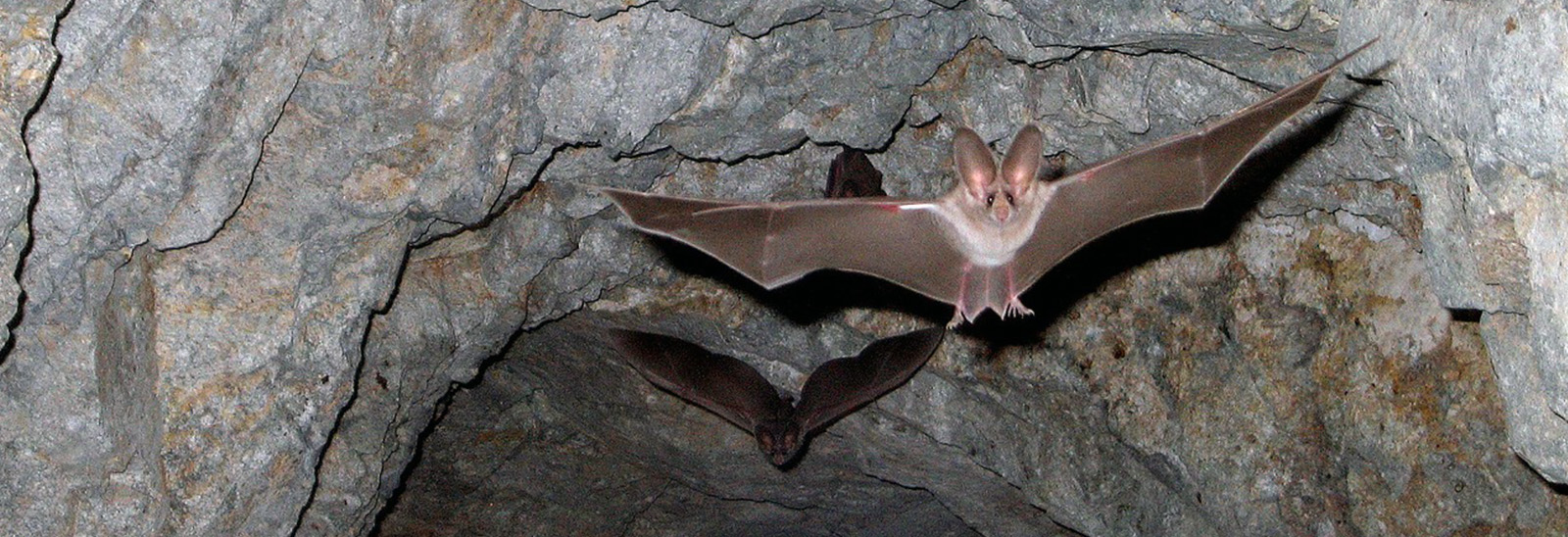October 31, 2017
The Scariest Things about Bats Explained

Believed to be nefarious creatures that suck the life-force out of human beings in the dead of night, bats have been feared for eons. These small beasts have an everlasting place in horror stories and movies, and are an enduring symbol of this dark, spooky season.
But are bats evil things that go bump in the night, or are they just misunderstood animals that play a significant role in our ecosystem? If you consider pollination of many plant species and seed dispersal important—and many of us do—the answer is, they are indeed vital to us.
Bats are also one of the top predators of night-flying insects and help keep down the insect population worldwide. “This results in not only fewer [disease-carrying] mosquitos in stagnant waters, but also fewer crop-destroying insects, which provides economic benefits,” said Marieka Schrader, a Senior Associate Biologist with GPA Consulting.
Unfortunately, more than 250 species—out of 1,300—are threatened, some close to extinction. “In some countries bats are hunted for meat, and others are killed because of unfortunate myths or fears,” Schrader added. But she said the major threat to most bat populations is habitat disturbance and destruction. Their importance came to light in late August, following heavy rains from Tropical Storm Harvey, when volunteers rushed to save a large colony of Mexican free-tailed bats from drowning as they roosted underneath Waugh Bridge in Houston.
Despite the benefits they offer to our health and economy, and the fact we live in an enlightened age, humans remain fearful of bats. Below are six real and not-so-real things about bats that terrify us:
1) They are vampires!
Unlike stories in popular culture and folklore, bats neither take human form and drain victims of their blood nor do they turn humans into creatures of the night with a mere bite. There are, however, three species of vampire bats that live on a steady diet of animal blood: the common vampire bat (Desmodus rotundas), the hairy-legged vampire bat (Diphylla ecaudata), and the white-winged vampire bat (Diaemus youngi), all of which are native to Mexico, and Central and South America.
Vampire bats emerge during the darkest part of night to hunt their prey, typically sleeping animals. They make a small puncture in the skin and use their tongue to lick blood that seeps from the tiny hole. They often consume no more than an ounce; not enough to hurt the animals on which they feed.
2) They only come out at night!
“Most, but not all, bats are nocturnal,” Schrader said. Some species are diurnal, meaning they are active in the day, and yet other species will occasionally forage during the day, she added. Nocturnal bats feed on nocturnal pests, such as mosquitos—which do feed on humans!
3) They fly blind—and into your hair!
The adage, “blind as a bat,” is a misnomer. Although their eyesight isn’t highly developed, bats can see. Bats use “echolocation,” or biological sonar, to help them hunt at night. They make high-frequency sounds and then analyze the waves that are bounced back to locate objects. Dolphins also use echolocation.
Bats’ echolocation ability is quite good, Schrader explained, and they are not likely to fly into people. “Definitely not on purpose.”
4) They sleep hanging upside down!
Seeing a bat hanging upside-down, with its wings folded, is a haunting vision. It’s reminiscent of the image Hollywood has cultivated of the vampire. If vampires aren’t sleeping in a coffin, they’re upside-down. Remember the scene from the 1987 film “Lost Boys,” when the vampire-hunting teens stumble on the four sleeping vampires? Oh, so creepy!
Almost all bat species do sleep upside down, but for no other reason than their bodies are more efficient that way. Bats are mammals—the only one that flies. Their wings do not produce the lift necessary for take-off, like a bird; therefore, bats drop into flight. Sleeping upside down or in higher places help them to launch into flight, especially if they are disturbed. Some bats, however, roost horizontally and tucked into crevices.
5) They carry rabies!
Of the weak, sick bats that are submitted to the Centers for Disease Control and Prevention (CDC), only a small percentage of them test positive for rabies. According to the CDC, approximately six percent. There are several species of insectivorous (feeds on insects) bats, as well as other mammals like raccoons, skunks, foxes, and coyotes, that serve as hosts for distinct strains of rabies. All mammals, according to the CDC, are susceptible to rabies infections and can pass the virus. More than 90 percent of human exposure is through rabid stray dogs.
Deaths attributed to rabies is rare in the United States because of vaccination and animal control programs. The death rate is higher in parts of the world where these types of programs are not available.
6) They’re evil!
Three species (out of 1,300) drink blood. Most are out at night. Most sleep hanging upside-down. And, they just look spooky! But none of this makes them inherently evil. These misunderstood creatures are intelligent, gentle, and compassionate. “They are an altruistic species,” Marieka said, “having been known to try and save pups by carrying them to safety when disturbed, and to adopt orphaned pups.”
And, bats happen to be one of the few mammals who actively share their food and their roost with others—even other species.
Marieka Schrader is a Senior Associate Biologist and Environmental Planner at GPA, and leads the firm’s biology group. She is experienced in conducting daytime bat habitat assessment, evening bat emergence surveys, and bat night roosting surveys, as well as analysis of bat calls for bat species identification using Sonobat classification software.